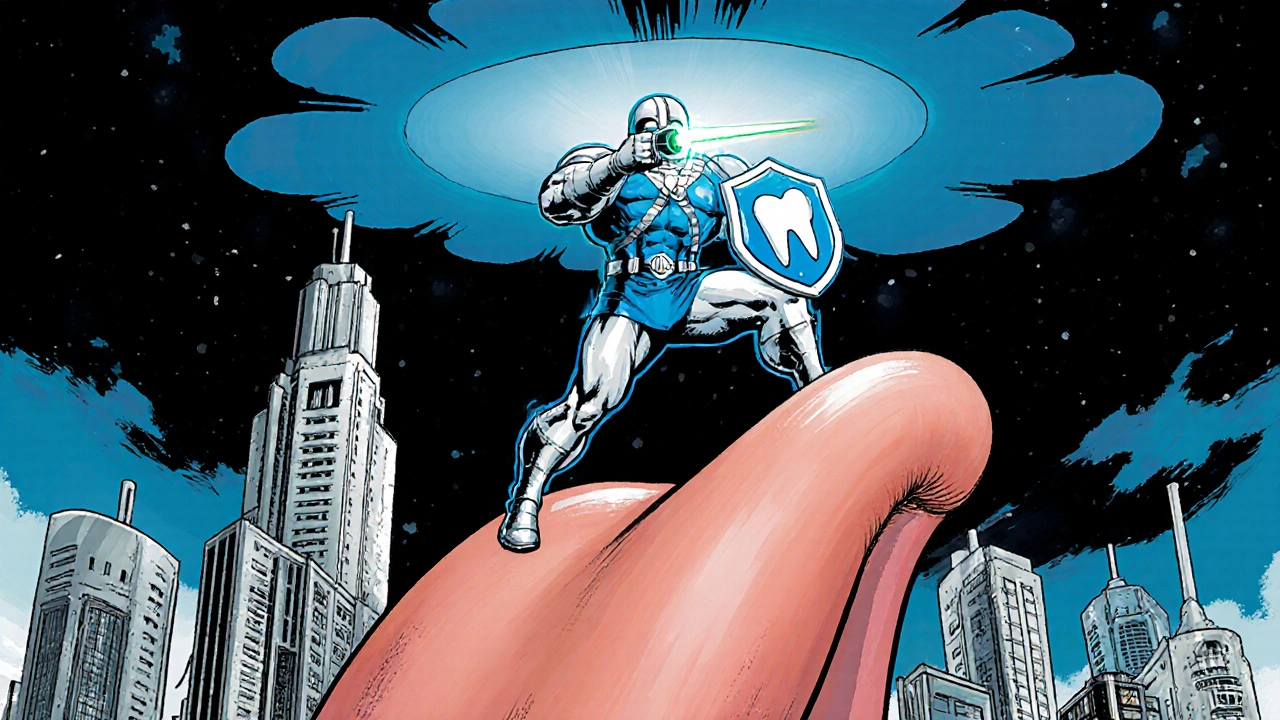Learn how prophylaxis-lifestyle changes, HPV vaccination, dental screening, and chemoprevention-can dramatically lower the risk of oral cancer.
Dental Screening: Why Early Oral Checks Matter
When you schedule a Dental Screening, a quick professional look at your teeth and gums to catch problems early. Also known as oral screening, it helps protect Oral Health, the overall condition of your mouth, teeth, and supporting tissues. During the visit your dentist focuses on Cavity Detection, spotting early decay before it spreads and Periodontal Assessment, checking gums for signs of disease. This combination of checks makes it easier to treat issues before they become painful or costly.
Most people think a dental visit is only about cleaning, but a dental screening is the first line of defense against hidden trouble. A simple visual exam, a quick probe around each tooth, and sometimes a bite‑wing X‑ray give the dentist a full picture of what’s happening below the surface. Catching a tiny cavity or early gum inflammation can save you weeks of discomfort and a lot of money later. In addition, many clinics add a brief oral‑hygiene questionnaire that reveals habits you might not realize are risky.
Dental screening encompasses oral health assessment, it requires both visual inspection and radiographic imaging. It influences early detection of decay, and it guides treatment planning. For example, finding a small lesion during screening leads to a targeted filling instead of a root canal down the line. The process also includes checking the bite, looking for signs of wear, and measuring gum depth with a periodontal probe—each step adds a data point that protects your teeth in the long run.
Everyone from kids losing their first baby teeth to seniors with implants should get screened at least once a year. Children benefit from early bite checks, while adults need regular gum checks because periodontal disease often shows no pain until it’s advanced. If you have a history of cavities or gum problems, your dentist may suggest a check‑up every six months. High‑risk groups—smokers, diabetics, or those with a family history of oral disease—might need even more frequent visits.
Before your appointment, brush and floss as usual, and bring a list of any new symptoms—like sensitivity or bleeding gums. Let the dentist know about medications that thin your blood, as they can affect gum probing. A quick chat about your diet and oral‑care routine helps the team tailor the screening to your lifestyle. Check whether your insurance covers the X‑ray, and don’t hesitate to ask about the cost of any extra tests the dentist recommends.
Why it matters for long‑term health
Research shows that people who stick to regular dental screenings have lower rates of heart disease and diabetes complications. The mouth is a doorway to the body, so keeping it clean and checked can reduce inflammation that travels elsewhere. Studies link chronic gum disease to higher risks of stroke and respiratory infections. In short, a brief visit now can protect more than just your smile; it can be a key part of overall wellness.
Below you’ll find articles that dive deeper into specific screening tools, the link between gum health and overall wellness, and practical advice for making the most of your next appointment. Use these resources to turn a routine check into a powerful step toward lasting oral and general health.

